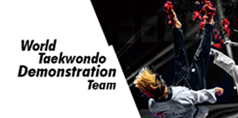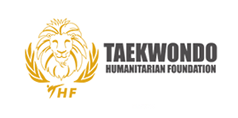The ancient martial art of taekwondo has embraced the future, with a fairer scoring system and more spectator engagement the outcome
**Excerpt from Rio 2016 website (http://www.rio2016.com/en/news/tech-wondo-shows-off-its-innovations-at-rio-2016-olympic-games-test-event)
Text: Patricia da Matta
Taekwondo may be a sport of ancient origins, but it has adapted to modern times. Electronic point scoring, video replays, DJs blasting out high-octane music… technology is already integrated, sharing responsibility with referees to guarantee fair contests and helping engage the audience. This past Sunday (21 February) the Rio 2016 taekwondo test event ended at Carioca Arena 1, showcasing the latest version of the Korean martial art, including a new competition area and more technology in the point scoring system: now, even head protectors come equipped with electronic sensors.
“We decided to invest in technology to help referees. We want the best fighter to win”
Phillippe Bouedo, WTF technical delegate
Before the London 2012 Games, the point scoring system depended exclusively on assessment from the referees. This often resulted in complaints from athletes and technical officials, who believed the sport erred in transparency and impartiality. At Beijing 2008, Sarah Stevenson of Great Britain was eliminated from the competition after a decisive blow in the final seconds of the contest was not scored by referees. The result was reversed after television replays were viewed and the Briton finished the Olympic tournament with bronze.
Become a taekwondo expert with our interactive infographic
The incident caught the attention of the International Olympic Committee (IOC) and to avoid the risk of the sport being withdrawn from the Olympic programme, the World Taekwondo Federation (WTF) began a series of innovations that gave new life to the sport.
“Technology has made the fight fairer. This was the best thing that could have happened”
Myriam Baverel, Olympian and French coach
The objective of taekwondo athletes remains the same: to strike the torso and head of the opponent with kicks and blows. The difference is that now they wear magnetised socks and have impact sensors in body and head protectors – the latter a first for the Rio 2016 Olympic Games.
The idea is to minimise the chances of refereeing errors, since blows to the head are worth three times more than blows to the torso and often decide contests. “New technology has given transparency to the sport. In London, we inserted sensors into the vests, but not the headwear. In Rio, for the first time in the history of the Games, we will have both,” said Bouedo.
Rio 2016 operates in partnership with Omega, the IOC’s technology partner, in the management of results. “There are several systems that work in an integrated way and at an impressive speed. As such, the athlete attempts a kick, the sensors transmit a signal automatically on a wireless frequency, which takes around 0.1 or 0.2 tenths of a second to be computed in all our systems,” said Rodrigo Silveira, Rio 2016’s results coordinator.
As such, technology has placed precision over strength in the rules of the game, which has affected the strategy of athletes and coaches. “It’s easier to train, as the athletes just need to concern themselves with being efficient and not having to show beauty in movement to score the point,” said Baverel.
Another initiative included is the possibility of requesting a video replay during the contest, a resource that allows analysis of the blow whenever there is a doubt on the mat.
“The inclusion of these resources forces the athlete to always adapt, which is very good. I started in the sport at a time when technology wasn’t present, so there was a lot of doubt in the results. This has now disappeared, because human error has been eliminated. This is absolutely the path to follow,” said Portugal’s Rui Bragança, who won silver in the -58kg at the test event.
Rio 2016 promises more action, music and drama
After responding to criticisms from athletes and coaches to make the sport fairer, the WTF then turned its attention to the spectator experience. At Rio 2016, personally selected walk-in music for the athletes, acrobatic performances and sport demonstrations will be used to engage the public.
The competition area has a new format: changing from a square to an octagon, which prevents athletes going on the defensive in the corners of the mat. Another move to make competitors more active was to change the rules to include penalties each time an athlete went a certain time without attacking.
“We want to see the athletes fighting more and more”
Phillippe Bouedo
Organised by Rio 2016 in partnership with the Brazilian Taekwondo Confederation (CBTKD), the test event featured 64 athletes from 15 countries in four of the eight Games categories (women’s -49kg and -57kg; and men’s -58kg and +80kg).
In the women’s -49kg category, Iris Sing, the only Brazilian to have qualified for the Games, fell in the qualifiers, leaving for compatriot Talisca Reis the task of climbing atop the podium at Carioca Arena 1, which she did after a close contest against Huai-Hsuan Huang of China. Thailand’s Napaporn Charanawat and Yasmina Aziez of France completed the podium, sharing bronze.
“I think that Brazil is starting to show that it has what it takes to win in this sport”
Talisca Reis, gold medallist at the test event
Among the women in the -57kg category, world champion Mayu Hamada of Japan confirmed her position as favourite by winning the final against Yu Chuang Chen of Chinese Taipei. Fenfen Shao of China and Canada’s Evelyn Gonda took bronze.
“This event was worthy as a preview of the Olympic Games. It was good to fight here and understand how things work in Rio”
Mayu Hamada
In the men’s competition, Iranian Armin Hadipour got the better of Bragança to win the -58kg category. Ren-Wei Dong of Chinese Taipei and Luisito Pie of the Dominican Republic ended the competition with bronze.
Among the heavyweights (+80kg), two-time world champion and current world no.2 Dmitry Shokin proved that he can continue to make history for Uzbekistan by taking gold. The podium was completed with silver for Jonathan Healy of the USA and bronze medallists Yassine Trabelsi of Tunisia and M’bar N’diaye of France.
“I want the gold medal at the Olympic Games now. I hope to be the first from my country to do this”
Dmitry Shokin
**Excerpt from Rio 2016 website (http://www.rio2016.com/en/news/tech-wondo-shows-off-its-innovations-at-rio-2016-olympic-games-test-event)


































